The content of the article
Warming of the loggia allows you to significantly expand its scope. From the place for storing old things and drying clothes, you can make a separate room or expand the area of the adjacent room. Warming of the loggia can be done with different materials, consider the most common.
Penofol insulation
This modern material is perfect for insulating a loggia in a panel house. Penofol has a very important advantage over other heat-insulating materials - a small thickness. The insulation does not reduce the area of the loggia and allows you to save maximum useful space.
Reflective foil is the main element of penofol, it prevents heat loss from the room, and also reflects it back, creating the effect of a thermos.
This heat insulator has many advantages:
- simple installation;
- low thermal conductivity in the range of 0.037-0.042 W / mK;
- reflection from 90% of heat;
- high rate of elasticity;
- excellent soundproofing characteristics;
- moisture resistance;
- durability.
The lack of material can be called increased cost.
Warming with penofol is performed in the following sequence:
- It does not matter what kind of insulation material is used, first of all it is necessary to install double-glazed windows, without which insulation will be useless.
- Before conducting thermal insulation, it is necessary to clean the insulated surfaces - walls, ceiling and floor. All openings and slots are sealed with polyurethane foam or cement mortar.
- You can fix penofol on the wall and ceiling on self-tapping screws, liquid nails and other suitable means. The most optimal option for attaching penofol with a construction stapler to the crate. Staples leave the least damage on the surface of the insulation. When installing penofol, the foil side should be directed into the room, because the main feature of this insulation is the reflection of heat.
- Penofol, unlike membrane films for hydro and vapor barrier, is not mounted with an overlap. The material is joined, the gap is filled with polyurethane foam and glued with metallic tape.
- Thermal insulation of the ceiling is carried out similarly, penofol needs to be fixed with a bend on the walls in order to close the gaps as much as possible and avoid cold bridges.
- Guides made of wood or metal are stuffed on penofol for fastening the finish sheathing: PVC panels, MDF, crown board or drywall, which will need to be plastered or wallpaper.
- It is advisable to insulate the floor in combination with other heat-insulating materials - mineral wool or polystyrene, which are covered with penofol and covered with boards, plywood or chipboard.
- Loggia is often heated using underfloor heating systems. Electric mats are laid on penofol.
Warming of the loggia with foam
Polyfoam is affordable and universal, it can be safely chosen for warming a loggia in a panel house.
- polystyrene is durable and moisture resistant;
- resistant to aggressive and chemical environments;
- easily processed, sawn, cut, polished;
- simplicity of fastening and installation;
- light weight;
- the foam does not lose its insulation properties at critical temperatures and getting wet;
- the possibility of finishing polystyrene with stucco or lining materials.
The foam has a few drawbacks, for example, it has low soundproofing properties. In addition, polystyrene emits toxic fumes when ignited.
There are two ways to install foam
It is possible to quickly and easily insulate the loggia with the wet method of installing polystyrene, for this you need:
- Clean the walls and ceiling;
- Prepare glue.
- Measure the area and cut the slabs of material;
- Apply glue around the perimeter of the plate and dotted in the middle.
Attach the foam to the wall, check the evenness of the installation with a building level. The plates are mounted on the wall in the form of brickwork, with mixing, as tightly as possible to each other.
In addition, fix the foam sheet on special dowels “fungi” or “umbrellas”. If joints are formed in some places, they are filled with foam.
Polyfoam can be plastered, pre-plastered all the cracks and secured the building mesh. After hardening, the surface is completely leveled by the second layer of plaster. The surface is painted, covered with decorative plaster or glued with wallpaper.
Installation of foam on the frame
The second option of attaching the foam is carried out on a pre-installed frame made of wooden beams or metal profiles. This method is similar to the technology of insulation using mineral wool slabs and will be discussed in detail below.
Polyfoam is an excellent heat-insulating material that can be used both separately and in combination with other heaters. For example, it is possible to effectively and inexpensively insulate a loggia in a panel house according to the following scheme:
- the floor is insulated with mineral wool;
- shelf - with penofol;
- walls - with foam at least 75 mm thick.
Also, the foam sheets can be additionally covered with penofol, enhancing the heat-insulating effect, although the cost of such insulation will increase.
Mineral wool for warming a loggia
Here is a list of the indisputable advantages of mineral wool, not counting the low cost:
- significant indicator of thermal conductivity - 0.035-0.046 W / mK;
- resistance to burning;
- good sound absorbing properties;
- the ability to pass pairs, the so-called "breathing" material;
- lack of corrosion processes, resistance to mold and fungus.
Mineral wool minus - loss of performance when wet or crushed material. Proper installation of mineral wool will avoid these problems.
Installing mineral wool includes the following steps:
- Marking is applied to the walls, taking into account the size of the mineral wool slabs and the size of the profiles. If wooden blocks are used for the frame, they must be impregnated with an antiseptic.
- On small surfaces, vertical rails are sufficient; on large areas, horizontal profiles are installed. The step of the profiles should correspond to the size of the plates of mineral wool - it should fit into the frame quite tightly, but not too much.
- Insulation is placed in the frame, it can be additionally glued to special glue.
- The insulation is covered with a vapor barrier on top, sheets of material are overlapped and glued with adhesive tape.
- For finishing, you can use various materials - panels, lining, drywall and more.
Video: warming the loggia with polystyrene foam

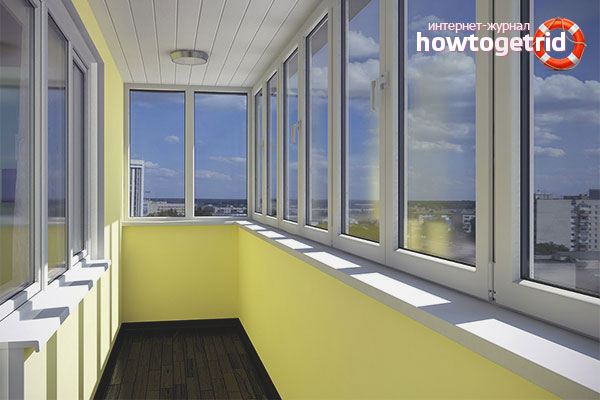
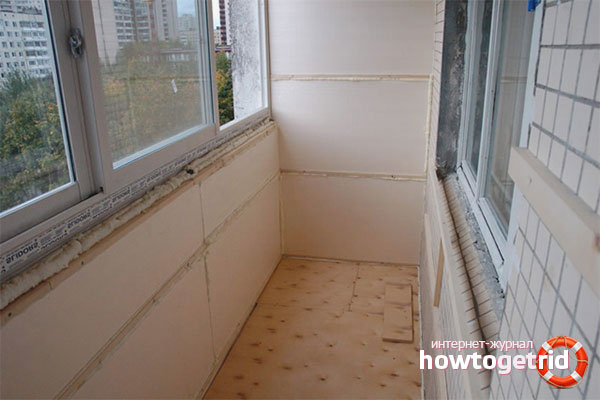
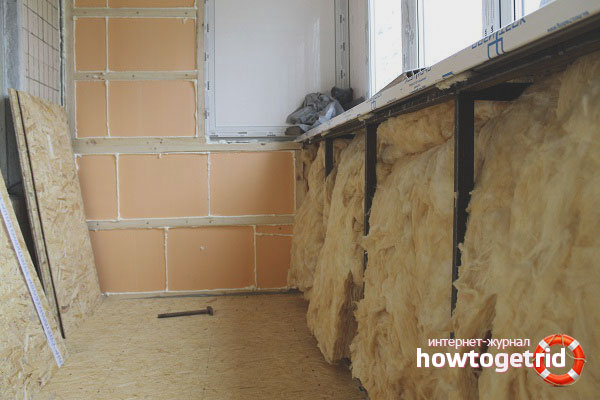

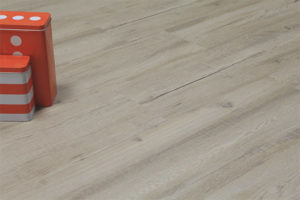




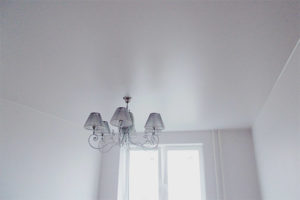

Submit